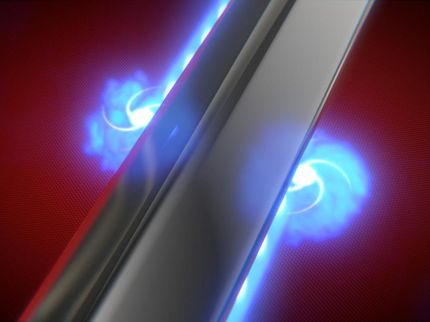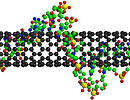3-D printing for building densely populated electronic assemblies investigated
Advertisement
As detector assemblies get smaller and denser -- packed with electronic components that all must be electrically connected to sense and read out signals -- it's becoming increasingly more challenging to design and manufacture these all-important instrument devices.
A team of NASA technologists at the Goddard Space Flight Center in Greenbelt, Maryland, however, has begun investigating the use of a technique called aerosol jet printing or direct-write manufacturing to produce new detector assemblies that are not possible with traditional assembly processes.
"If we succeed, aerosol jet technology could define a whole new way to create dense electronic board assemblies and potentially improve the performance and consistency of electronic assemblies," explained Goddard technologist Beth Paquette, who is leading the R&D effort that began last fiscal year. Furthermore, aerosol jet printing promises to slash the time it takes to manufacture circuit boards, from a month to a day or two, she added.
Important Distinction
As with other 3-D printing techniques, aerosol jet manufacturing builds components by depositing materials layer-by-layer following a computer-aided design, or CAD, drawing. However, jet aerosol printing offers an important difference.
Instead of melting and fusing plastic powder or some other material in precise locations, as in the case of many 3-D printers, aerosol jet printing uses a carrier gas and printer heads to deposit a fine aerosol of metal particles, including silver, gold, platinum, or aluminum, onto a surface. Aerosol jet printers also can deposit polymers or other insulators and can even print carbon nanotubes, cylindrically shaped carbon molecules that have novel properties useful in nanotechnology, electronics, and optics.
"It can print around bends, on spheres or on something flat, or on a flexible surface, which then can be flexed into the shape you want," she said.
These attributes make the technology ideal for detector assemblies, particularly those that need to be shaped differently or are very small, yet dense because of the large number of tiny components that must be electrically wired or linked together on a circuit board -- an inescapable reality as instruments get smaller and smaller.
"We can make these wires microns in width," Paquette said. "These lines are very small, down to 10 microns wide. These sizes aren't possible using traditional circuit board manufacturing processes." (By way of comparison, the average human hair measures between 17 and 191 microns in width.)
Other Applications
However, the technique's use isn't limited to detector electronics. Technologist Wes Powell, who specializes in electronics at Goddard, envisions a time where instrument developers could use aerosol jet technology to print antennas, wiring harnesses, and other hardware directly onto a spacecraft.
Paquette's research involves NASA's Marshall Space Flight Center, the National Institute of Standards and Technology, the University of Maryland's Laboratory for Physical Sciences, the University of Delaware, Georgia Tech, and the University of Massachusetts-Lowell. In addition, several industry groups are involved, including the United Technologies Research Center, East Hartford, Connecticut; NanoDirect LLC, Baltimore, Maryland; Raytheon, Waltham, Massachusetts; and Optomec, Albuquerque, New Mexico.
So far, the team has found that the technology holds promise, and is now evaluating the technique's repeatability and robustness particularly for a spaceflight application.
"Aerosol jet printing has the potential for many configurations, but the deposits have not yet been assessed under typical flight conditions. That's what we're doing here," she said.



























































